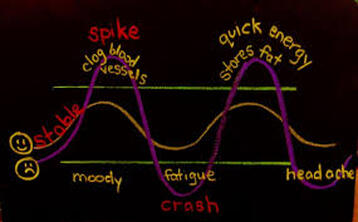Blog Post by Coach JulieNCI Certified Nutrition Coach L1 & Certified Mindset Coach I began Phase 4, the reintroduction phase, on July 7th. With this phase I started 2 new supplements Flora Protect and a supplement called PepZin GI. These two supplements are to repopulate the gut with good bacteria and to protect the gut barrier and gut immunity. I will maintain the S. Boulardii with these two supplements and I have continued the peppermint oil. I am reintroducing foods on a 3 day cycle. The first day, I will consume half a serving of a certain food. If I don’t have symptoms, I will continue to day two where I will consume a half serving twice per day. Assuming there are still no symptoms, I will eat a normal serving on day 3. Day 4 is a rest day, to make sure that I don’t experience any delayed symptoms. Sometimes delayed symptoms can occur if you’re experiencing constipation so we’ve built in a rest day to allow any symptoms to subside before we start a new 3 day cycle with a different food. After the end of the cycle, if there were no symptoms, I have been waiting a week or so and then reincorporating those foods back into my normal diet.
Since the last update, I have reintroduced: cauliflower, bran, kidney beans, cream cheese, honey and apples. All have been a successful introduction. I am still working through a list of foods that I had eliminated and this will continue until I have tried all the foods that I eliminated so that I am either back to a normal diet or have identified some trigger foods. I am getting very close to wrapping this phase up, I have 11 more foods that I would like to add. I am taking this phase very slowly to be sure that I can clearly identify if there are some trigger foods. My coach has said that I can probably wrap it up, but I feel more comfortable maintaining this cadence until everything I used to eat is included. I am continuing the supplement regimen that I listed above until I am out of them. When I run out, I will not be refilling those. This includes the S. Boulardii. The only supplement listed that I will continue is the peppermint oil as that will be carried over into Phase 5. After this phase, we will move on to Phase 5 where we will eliminate Nexium and work on increasing my stomach acid levels. I have the protocol and I know what I will be adding, however I am not going to start this until I have completed the current supplementation and the reintroduction phase.
0 Comments
 There are a few key nutrients that can make the sometimes challenging task of balancing your blood sugar easy and approachable! These three key nutrients are: fat, fiber, and protein. Other diabetes resources focus on limiting or even removing certain foods from your diet, but instead we’re going to focus on adding these three key nutrients to your plate each time you eat. . .
THE BLOOD SUGAR ROLLER COASTER
sugar and other forms of carbohydrates.
shown above.
FAT •Fat often gets a bad rep in the media and becomes feared by many, grabbing the non-fat or low-fat options at the grocery store or coffee shop. However, fat is a vital macronutrient essential in everyone's daily diet.
fat to absorb the goodness of these specific vitamins. So eating avocado or salad dressing on a salad will function both for flavor and aiding the absorption of those fat- soluble vitamins in vegetables. •Fat helps keep us full and satiated. This is simply because this macronutrient takes longer to exit the stomach, so when your meals or snacks contain fat, they help keep you satisfied longer and keep hunger away. •Fat can also slow down carbohydrate absorption, which means a more steady blood sugar response after meals and snacks.. FIBER •Fiber is great because it prevents us from getting hungry again soon after we've eaten and can help regulate blood sugar levels. •There are two types of fiber, soluble and insoluble. •Soluble fiber dissolves in water. Soluble fiber is helpful for our cholesterol and blood sugar regulation. •Insoluble fiber is not dissolvable in water and will aid in moving food through our digestive system. •A great way to increase fiber in your daily diet is to keep the skin on vegetables and fruit. So, for instance, if you're making a soup, scrub the carrots well to clean off any dirt but leave that beautiful orange skin on the vegetable to retain more fiber! PROTEIN •Protein is a macronutrient that plays a vital role in balancing our blood sugars. •Protein can be derived from animal-based sources such as meat, poultry, fish, eggs, and dairy. Protein can also be derived from plant-based sources such as whole grains, legumes, beans, nuts, and seeds. PUTTING IT INTO ACTION Toast
Dairy
Oatmeal
Rice or Pasta
- Coach Kayli |
AuthorKayli is a certified personal trainer and online coach that specializes in fitness, wellness, nutrition, mindset, mobility and everything in between. Categories
All
Archives
June 2024
|
Call Us 620-757-9146
Home | About Us | Personal Training | Online Nutrition and Fitness Coaching | Custom Training Plans | Breakfast | Entrees | Dressings | Snacks | Blog
Phoenix Rising Podcast | Product Recommendations | Contact Me
Phoenix Rising Podcast | Product Recommendations | Contact Me
Copyright 2024 Kayli Montoya Fitness

